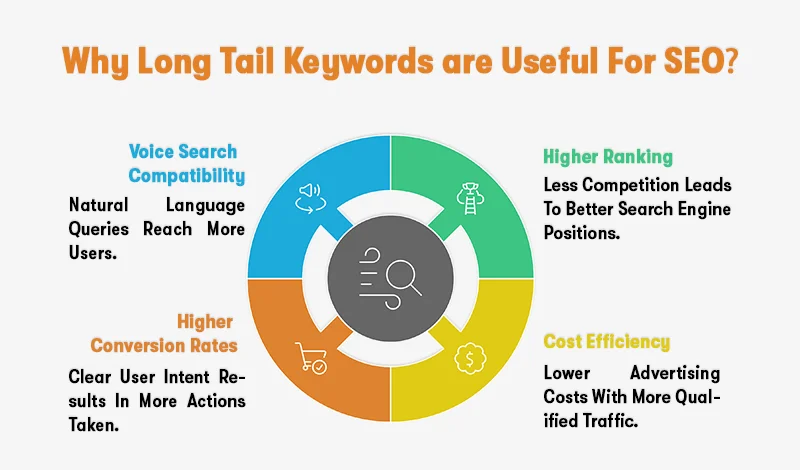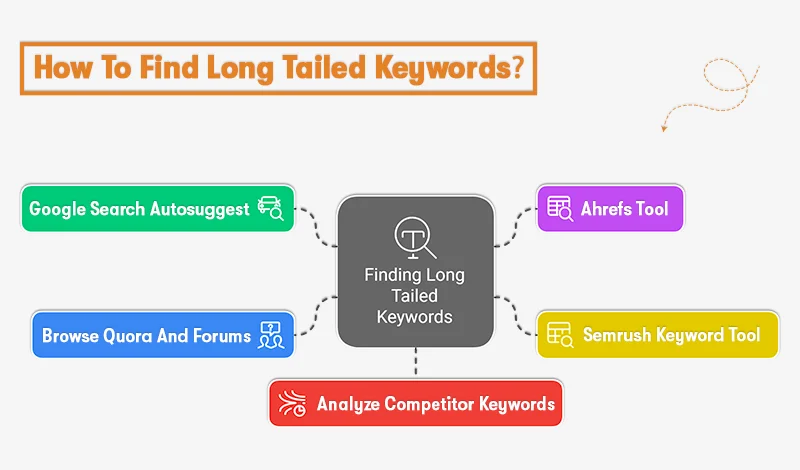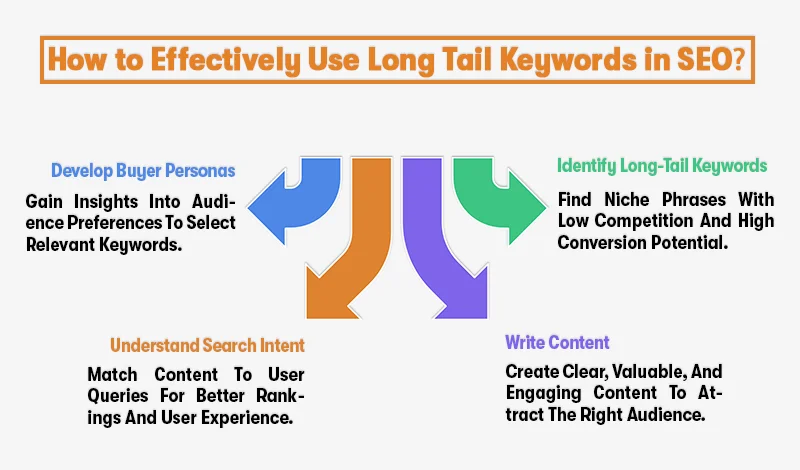Long tail keywords are seen as a smart weapon in SEO strategies. Many marketers say they bring more traffic with less competition. They are not just for ranking; they are about reaching the right audience at the right time.
In this blog, you’ll explore what long-tail keywords are and why they are useful. These targeted keywords bring more qualified traffic and increase your search rankings.
What are Long Tail Keywords
Long tail keywords are longer and typically have lower search volume and competition. They usually contain three or more words and are often used by people who know exactly what they’re looking for.
Long tail keywords examples:
It includes longer phrases like affordable SEO tools for small business keyword research.
1: On-page SEO tips for small businesses
2: Affordable seo services for small business
3: Low impact exercises for joint pain
4: Eco-friendly packaging for handmade products
5: 5 Best SEO Books in 2025
Why Long Tail Keywords are Useful For SEO?

Long tailed keywords are important for SEO because they target specific searches, attracting high interested visitors and increasing conversion chances.
- They are less competitive and target specific search intent, helping you rank higher and attract more qualified traffic.
- Long-tail keywords cost less in advertising and attract more qualified visitors, helping you maximize your marketing budget and achieve better ROI over time.
- It attracts users with clear intent, often leading to higher conversion rates by connecting with visitors more likely to take action.
- It works well for voice searches and natural questions, helping you reach more people using voice assistants to find information.
How To Find Long Tailed Keywords?

Discovering the right longtail keywords helps your target specific audience and improve your SEO results.
-
Google Search Autosuggest
Some SEO experts recommend finding these keywords using Google autosuggest by typing your main keyword and adding different letters and words to see the variety of search suggestions. However, Google Autosuggest usually shows broad, popular searches rather than specific, detailed phrases.
-
Use Ahrefs Tool
Ahrefs offers a powerful keyword research tool, including a dedicated section for finding specific phrases. You can enter a broad keyword and filter results by search volume, difficulty and phrase length to discover targeted, low-competition keywords that fit your niche.
-
Semrush Keyword Tool
SEMrush offers detailed keyword data and insights. Its Keyword Magic Tool helps you find related long tail phrases and analyze search intent to improve your strategy.
-
Browse Quroa and Forum
Quora and forums are great places to see real questions and conversations from your audience. By exploring these platforms, you can find natural, specific phrases people use to search for information.
-
Analyze Competitor Keywords
A good way to find long-tail keywords seo is by checking your competitors. Use Ahrefs site explorer to enter their websites and view the organic keyword report to see which keyword brings them traffic.
How to Effectively Use Long Tail Keywords in SEO?

Below are effective content strategies to increase longtail keywords performance and improve SEO outcomes.
1: Start With Buyer Personas
Develop buyer personas using actual data to gain insight into your audience’s preferences and how they search online. It helps you pick relevant keywords that drive conversions, even with lower search volumes. Use surveys and interviews to collect information.
2: Identify Long-Tail Keyword
Focus on specific, niche phrases that reflect the exact search queries your audience is using. Tools like Google Keyword Planner or SEMrush can help find keywords with low competition and high conversion potential.
3: Understand Search Intent
Effective SEO means solving user problems and understanding their intent. Consider using 2 to 3 relevant long tail keywords that match the search terms used by users. Make sure your content is high quality and doesn’t contain keyword stuffing to improve your rankings and user experience.
4: Write Content
To rank high for long tailed keywords and attract the right audience, your blog content needs to be clear, valuable, and engaging.
- Use the keyword in the title and first paragraph to highlight its importance and improve relevance..
- Add it naturally in subheadings and throughout the main body of the content.
- Use the keyword in the meta title, meta description and image alt text.
- Focus on answering specific user queries that match the keyword intent.
Conclusion
Long tail keywords are specific, detailed and longer phrases that target niche search queries. These are useful because they attract highly relevant traffic with clear user intent, making it easier to rank higher in search results. By focusing on these keywords, you can connect with an audience looking for exactly what you offer, improve engagement, and drive better conversions.


